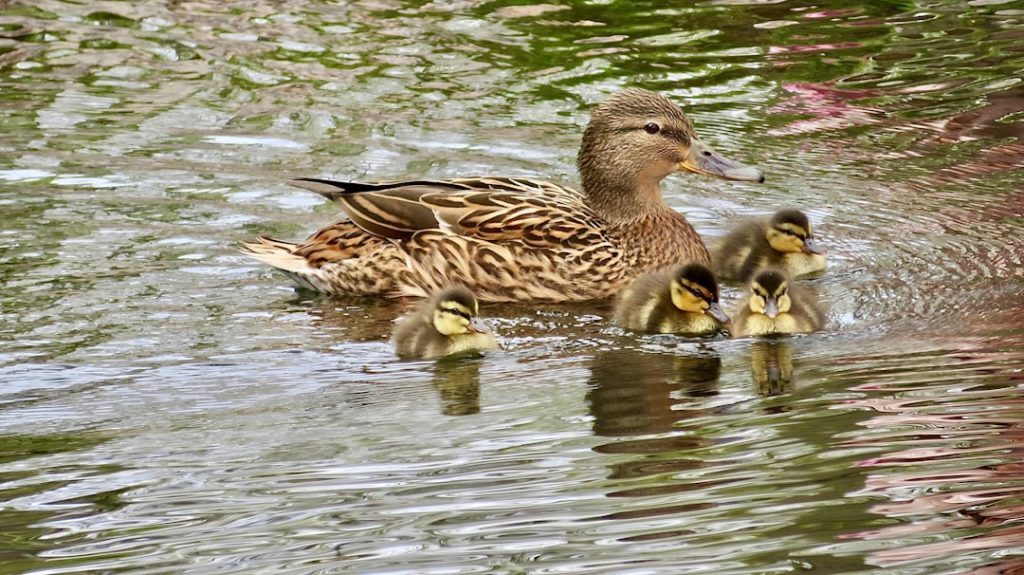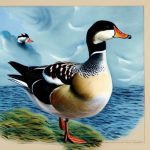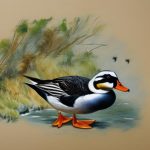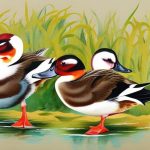Ducks are a popular choice for farming and backyard homesteading due to their versatility, hardiness, and the many benefits they provide. There are numerous duck breeds to choose from, each with its own unique characteristics and qualities. From egg production to meat, pest control, and even companionship, ducks can serve a variety of purposes on the farm. Understanding the different duck breeds and their specific traits is essential for anyone considering adding ducks to their flock.
Duck breeds can be categorized into three main groups: meat breeds, egg breeds, and dual-purpose breeds. Meat breeds, as the name suggests, are bred specifically for their meat production. These ducks tend to grow quickly and have a high feed conversion rate, making them an efficient choice for meat production. Egg breeds, on the other hand, are bred for their egg-laying abilities. These ducks are known for their prolific egg production and can be a valuable addition to any farm or homestead. Dual-purpose breeds are a combination of both meat and egg production, making them a versatile choice for those looking to raise ducks for multiple purposes. With so many options available, it’s important to research and understand the specific needs and characteristics of each breed before making a decision on which one is right for your farm.
Table of Contents
Key Takeaways
- There are many different duck breeds, each with their own unique characteristics and purposes.
- Popular duck breeds for farming include the Pekin, Khaki Campbell, and Indian Runner.
- Rare and exotic duck breeds such as the Silver Appleyard and Saxony can add diversity and interest to a farm.
- When choosing a duck breed, consider factors such as egg production, meat quality, and temperament.
- Caring for ducklings requires proper housing, nutrition, and protection from predators.
Popular Duck Breeds for Farming
When it comes to popular duck breeds for farming, several stand out as top choices for both beginners and experienced duck enthusiasts. The Pekin duck is one of the most popular meat breeds due to its fast growth rate and excellent meat quality. Pekin ducks are also known for their calm and friendly demeanor, making them a great choice for those looking for a docile breed to raise. Another popular meat breed is the Muscovy duck, which is prized for its lean and flavorful meat. Muscovy ducks are also excellent foragers and can help control pests in the garden or on the farm.
For those interested in egg production, the Khaki Campbell is a top choice. These ducks are known for their exceptional egg-laying abilities, often producing upwards of 300 eggs per year. Khaki Campbells are also hardy and adaptable, making them a great choice for those new to duck farming. The Indian Runner duck is another popular egg breed, known for its upright stance and prolific egg production. Indian Runners are also excellent foragers and can help keep gardens free of pests.
Rare and Exotic Duck Breeds
While popular duck breeds like the Pekin, Muscovy, Khaki Campbell, and Indian Runner are well-known in the farming community, there are also many rare and exotic duck breeds that are worth considering for those looking to add something unique to their flock. The Silver Appleyard duck is a rare breed that is prized for its striking plumage and excellent meat quality. These ducks are also known for their friendly and docile nature, making them a great choice for those looking for a dual-purpose breed with a bit of flair.
The Welsh Harlequin is another rare breed that is gaining popularity among duck enthusiasts. These ducks are known for their beautiful coloration and excellent egg-laying abilities, often producing upwards of 250 eggs per year. Welsh Harlequins are also known for their calm and friendly demeanor, making them a great choice for those looking for a versatile and attractive breed to add to their flock. For those looking for something truly exotic, the Cayuga duck is an excellent choice. These ducks are known for their iridescent green-black plumage and excellent meat quality. Cayuga ducks are also hardy and adaptable, making them a great choice for those looking for a unique addition to their farm.
Choosing the Right Duck Breed for Your Needs
When it comes to choosing the right duck breed for your needs, there are several factors to consider. First and foremost, it’s important to think about your specific goals and what you hope to achieve by raising ducks. Are you primarily interested in meat production, egg-laying, or a combination of both? Understanding your goals will help you narrow down your options and choose a breed that aligns with your needs.
It’s also important to consider the climate and environment in which you live. Some duck breeds are more cold-hardy, while others thrive in warmer climates. By choosing a breed that is well-suited to your specific climate, you can help ensure the health and well-being of your ducks. Additionally, it’s important to consider the space you have available for raising ducks. Some breeds require more space to roam and forage, while others can thrive in smaller enclosures.
Finally, it’s important to consider the temperament and behavior of different duck breeds. Some breeds are known for being calm and friendly, while others may be more skittish or independent. By choosing a breed that aligns with your preferences and lifestyle, you can help ensure a positive experience raising ducks on your farm.
Caring for Ducklings: Tips and Advice
Caring for ducklings requires special attention and care to ensure they grow into healthy adult ducks. When raising ducklings, it’s important to provide them with a warm and secure brooder that is free from drafts and predators. A heat lamp or heat pad can help maintain the proper temperature for young ducklings, which should be around 90-95 degrees Fahrenheit for the first week of life, gradually decreasing by five degrees each week until they are fully feathered.
In addition to warmth, ducklings also require access to clean water at all times. However, it’s important to note that young ducklings can easily drown in deep water, so providing shallow water dishes or specialized chick waterers with marbles or rocks can help prevent accidents. Ducklings also require a balanced diet that is high in protein to support their rapid growth and development. Commercial duck starter feed or a homemade mix of chick starter feed supplemented with brewer’s yeast can provide the necessary nutrients for healthy duckling growth.
As they grow, ducklings will also need access to outdoor space where they can safely explore and forage. Providing a secure outdoor enclosure or supervised free-range time can help young ducklings develop important natural behaviors while keeping them safe from predators.
Adorable Duckling Pictures to Brighten Your Day

There’s no denying the irresistible charm of baby ducklings. Their fluffy down, tiny beaks, and waddling walk make them some of the most adorable creatures on the farm. Whether they’re splashing in a puddle, snuggling together for warmth, or exploring their surroundings with curiosity, ducklings never fail to bring joy to those who have the pleasure of watching them grow.
One of the most endearing sights is seeing a mother duck leading her brood of ducklings in a line as they follow her every move with unwavering trust. The sight of these tiny creatures waddling behind their mother is enough to melt even the coldest of hearts. And who can resist the sight of ducklings taking their first swim? Their excitement as they paddle around in the water is truly infectious.
Ducklings also have an innate sense of curiosity that leads them to investigate every nook and cranny of their environment. Watching them explore their surroundings with wide-eyed wonder is a reminder of the simple joys of discovery that we often take for granted as adults. Whether they’re pecking at bugs in the grass or chasing after each other in playful antics, ducklings have a way of brightening even the dreariest of days.
The Joy of Raising Ducks
In conclusion, raising ducks can be a rewarding experience that offers a wide range of benefits for farmers and homesteaders alike. From meat and egg production to pest control and companionship, ducks have much to offer those who choose to raise them. By understanding the different duck breeds available and their specific traits and characteristics, farmers can make informed decisions about which breeds are best suited to their needs.
Whether you choose popular breeds like Pekin or Khaki Campbell, rare breeds like Silver Appleyard or Welsh Harlequin, or exotic breeds like Cayuga, adding ducks to your farm can bring joy and fulfillment as you watch them grow from adorable ducklings into productive members of your flock. With proper care and attention, ducks can thrive in a variety of environments and provide valuable resources for those who raise them.
So whether you’re drawn to the practical benefits of raising ducks or simply want to experience the joy of watching adorable ducklings grow into beautiful adult ducks, there’s no denying the appeal of these charming birds. With the right knowledge and preparation, raising ducks can be a fulfilling endeavor that brings both practical benefits and simple pleasures to those who choose to welcome them into their lives.
If you’re interested in learning more about caring for young poultry, you might want to check out this helpful article on how to care for goslings. It provides valuable insights into raising and nurturing young waterfowl, which can be beneficial for anyone looking to expand their knowledge beyond duck breeds and duckling pictures.
FAQs
What are some common duck breeds?
Some common duck breeds include the Pekin, Mallard, Rouen, Khaki Campbell, and Indian Runner.
What are some characteristics of ducklings?
Ducklings are typically covered in soft down feathers, have webbed feet, and a short bill. They are also known for their adorable and fluffy appearance.
Where can I find pictures of ducklings?
You can find pictures of ducklings on various websites, including stock photo websites, social media platforms, and duck breeders’ websites. You can also find them in books and magazines about ducks and waterfowl.
Are there different colors and patterns of ducklings?
Yes, ducklings come in a variety of colors and patterns, depending on the breed. Some common colors include yellow, brown, black, and white, and some ducklings may have spots or stripes.
What do ducklings eat?
Ducklings typically eat a diet of commercial duck starter feed, which provides them with the necessary nutrients for healthy growth. They may also eat small insects, plants, and grains if they are raised in a natural environment.
Meet Walter, the feathered-friend fanatic of Florida! Nestled in the sunshine state, Walter struts through life with his feathered companions, clucking his way to happiness. With a coop that’s fancier than a five-star hotel, he’s the Don Juan of the chicken world. When he’s not teaching his hens to do the cha-cha, you’ll find him in a heated debate with his prized rooster, Sir Clucks-a-Lot. Walter’s poultry passion is no yolk; he’s the sunny-side-up guy you never knew you needed in your flock of friends!







